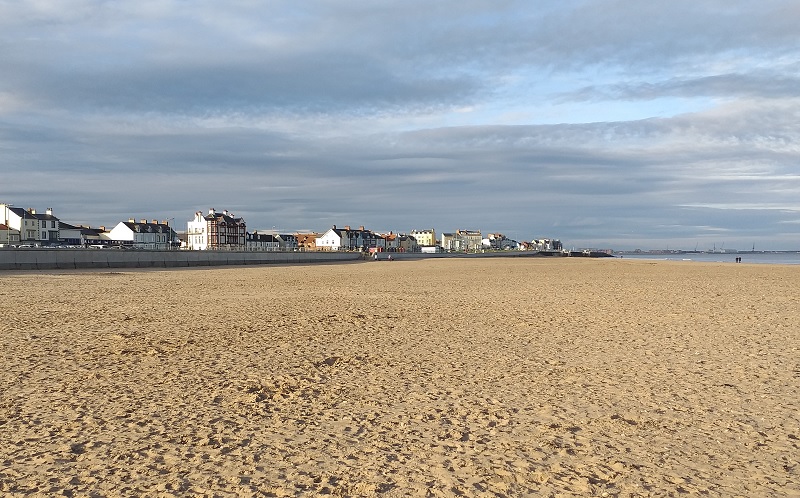Yesterday I went to Seaton Carew. I haven’t been there in a great many years.
Seaton Carew is a typical British seaside town in the North East of England. It’s not far from Hartlepool.
Hartlepool is a more popular destination. It’s also slightly more famous thanks to an incident that happened during the Napoleonic Wars.
After a French Warship foundered near the coast, the people of Hartlepool discovered the only survivor was the ship’s pet monkey. They hung it believing it to be a spy. To this day, people in the North East often jokingly refer to people from Hartlepool as “Monkey Hangers”, but that’s a story for another day.
Seaton Carew was originally a fishing village. Then during the eighteenth and nineteenth centuries, it became popular with the wealthy Quaker families in Darlington, who liked to go to Seaton Carew and unwind. That’s how it made the transition to being a seaside resort.
The Quakers had to travel from Darlington to Seaton Carew via horse and carriage. The 20-mile journey would have taken quite a long time. These days, you can often make the journey in less than an hour, travelling by train. That doesn’t sound super-fast, but you need to change trains at Thornaby. Depending on the time you are travelling, you may have to a wait time of just a few minutes or as long as half-an-hour. [National Rail Journey Planner]
Unless you grew up in the North of England, it would be easy to spend your whole life in Britain and never know Seaton Carew exists. The Quakers may have loved it but, these days, it’s anything but a hot-spot holiday destination.
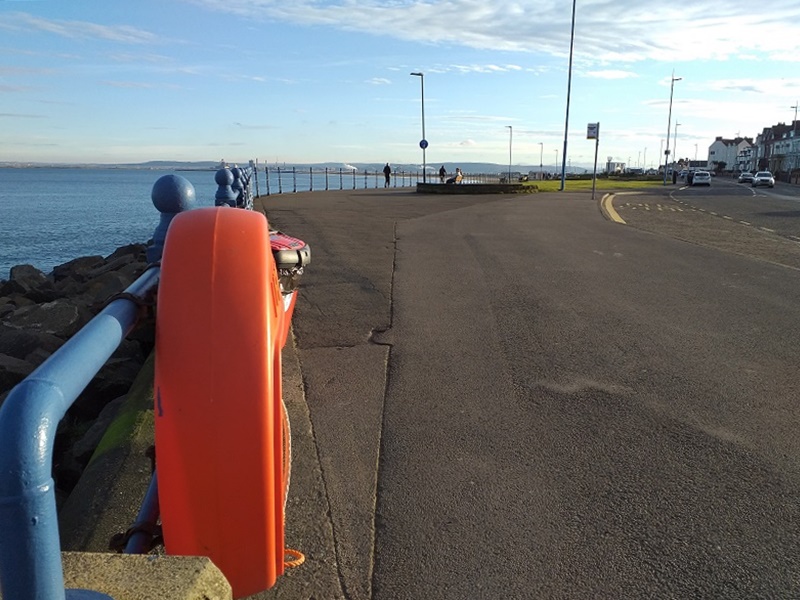
When I was a very young child, my grandmother’s sister lived in Seaton Carew and we sometimes used to go and visit her. Back then, if anyone mentioned the “seaside” the only association in my mind was Seaton Carew or “Seaton” as it’s often called for short.
I have many fond memories of eating fish and chips and Seaton Carew rock. The fish and chips at Seaton always seemed to taste better than the fish and chips I’d eaten elsewhere. My family told me it was because the fish were fresh from the sea.
If you ever decide to visit Seaton Carew, you may be surprised at what you find. It’s a town of stark contrasts located in part of the North East that’s known for it’s heavy industry.
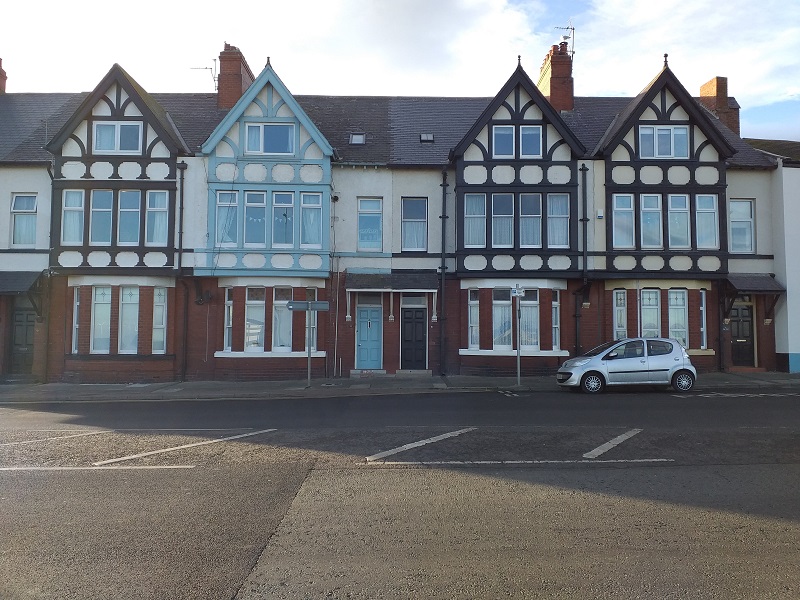
When you look at all the distinctive-looking stucco houses and hotels that line the seafront it’s hard not to be impressed. Then if you walk down the road that runs next to the seafront you will find a few amusement arcades where you can go and feed your money into various types of machine. This is typical for British seaside resorts.
There are bars, restaurants, candy shops, and, of course, there are fish and chips shops as well. However, if you stand and look down the beach, to the south, you will see a depressing, grey-coloured establishment. I thought it was a chemical plant, but it’s actually a steelworks.
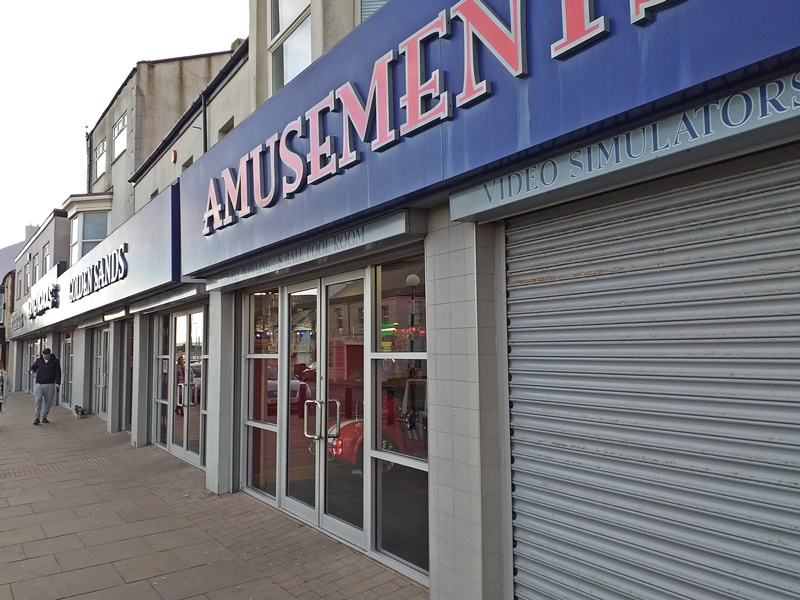
When I was walking on the beach, I could smell an unpleasant chemical-like aroma. The smell wasn’t overpowering, but its not the kind of thing you expect assailing your nostrils during a day out.
I don’t remember noticing a smell when I visited Seaton Carew as a kid. I don’t remember the steelworks either, but it’s the same one you can see from Redcar beach and it’s older than me.
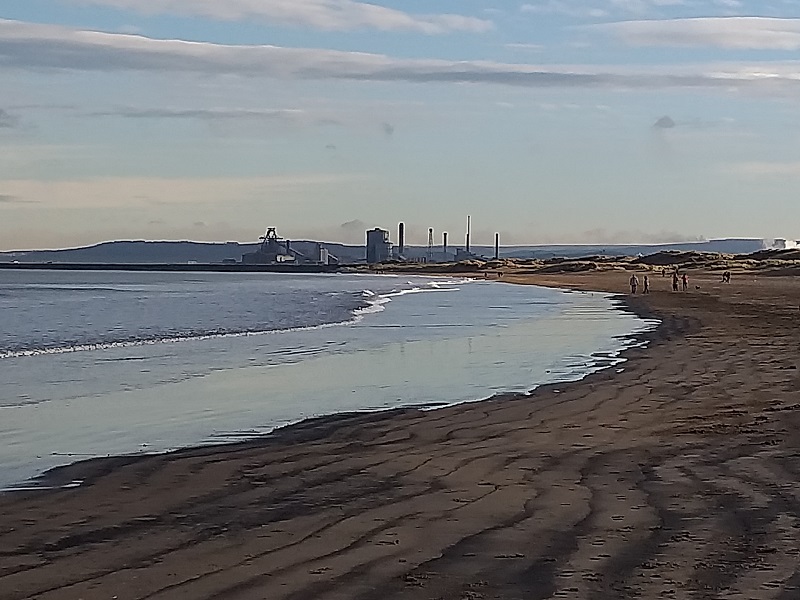
All the wind turbines that are presently standing in the sea are definitely a recent addition. Forty years ago, when I looked out to sea all I saw was water and boats.
The promenade also has a few colourful additions in the form of plastic beach huts.
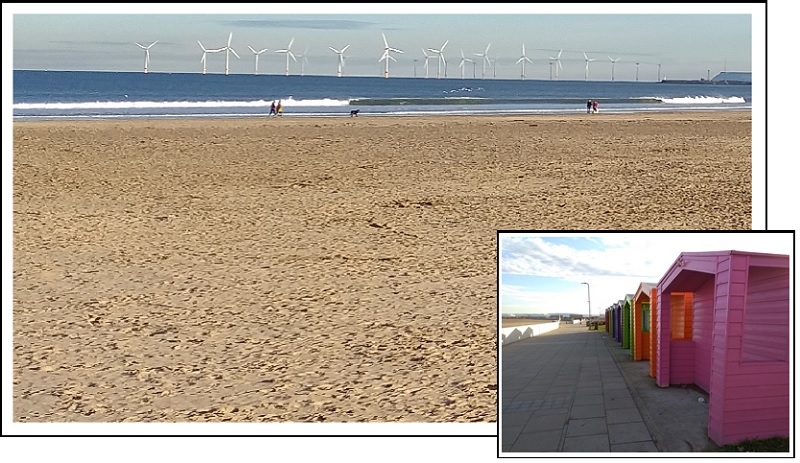
Although it’s not a memory that scars me, Seaton Carew is the place where I was nearly swept out to sea. I was less than 10-years-old at the time and was standing near the water watching the waves rolling in and touching the tips of my shoes. Then I saw a big wave coming. I turned to run, but the wave pulled my feet out from under me. The next thing I knew it was lifting me up and dragging me along the sand.
Fortunately, my Aunty Ruth came running to the rescue and dragged me from the water. I was drenched and needed some new clothes.
The story of what happened must have travelled quite fast because when we went in a shop buy some dry clothes I remember the lady saying, “Is this the little boy who nearly got swept out to sea?”
It’s just a memory. I don’t even see it as a bad experience. Standing on the same beach 40+ years later and watching the waves lick my boots, the memory is there but I have no fear of the water.
I still remember which street my Grandmother’s sister lived on, but I don’t recall which house. It’s a nice street just off Seaton Green. Yesterday, I made a point of crossing the green and taking a quick trip down memory lane.
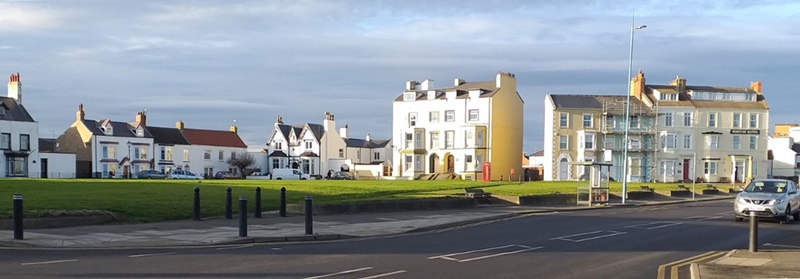
As I was crossing the green I noticed a red telephone box. I thought it must only be there for ornamental purposes, but it has a phone inside. I opened the door, picked it up the receiver, and heard a dial tone. That was a surprise. A fully functioning red telephone box? In this day and age? That’s not something I expected to find.
I think the main reason I decided to visit Seaton Carew was to see if it has changed. Despite the wind turbines and beach huts, it’s not changed that much but I have. The little boy may have been saved from being swept out to sea but he’s still dead and gone. Now he only lives in memories—seldom visited and often forgotten.
When I was standing looking out to sea, I realized, Europe was directly ahead. These days I’m more used to looking across the North Sea from the other side. Or looking at the Mediterranean or some other sea.
When I used to visit Seaton Carew as a child, I lived in a very small world. I don’t think I even knew what lay beyond the sea. It’s amazing how much my life has changed and how little things have changed at Seaton Carew.
– – – – –
– – –
– – –
– – – – –
